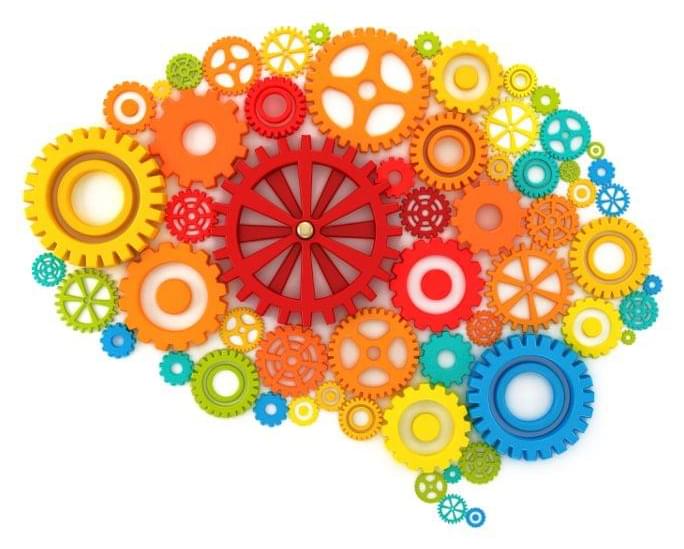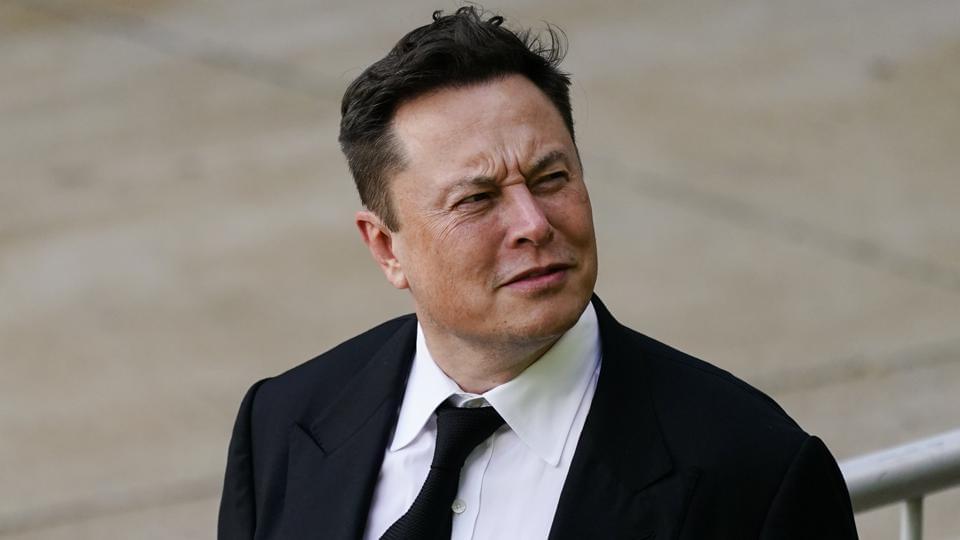The theory rests on a phenomenon well-documented on Earth.
On early Mars, water hung on longer than it should have — that might be because of water clouds that prevented evaporation of rivers and lakes.

Sunny way.
A ‘bike highway’ running between Daejon and Sejong in South Korea is a sight —or rather, a concept —, you surely haven’t thought of before: It stretches for 20 miles (32 km), and it not only shields cyclists from the sun but also generates power at the same time.
It’s true that a bicycle lane in the center of a highway is an unusual location for one, especially with three lanes of traffic on either side of it, yet it works. Much like the $3.7 million SolaRoad in the Netherlands, a 230-foot road replaced by solar panels, which powers the highway’s lighting system, this bike highway is a win for green energy. Its lanes produce more than enough electricity to power the lighting of the highway and the electric vehicle charging stations, according to Fast Company.
However, in the Netherlands, bicyclists ride on top of the panels instead of under them, while South Korea’s case is the opposite. Under the overhead solar panels, cyclists use subterranean tunnels to enter and exit the path, which boosts safety tremendously since they can get on and off the bikeway without being involved in the regular traffic. Once on the route, they’re shielded from the traffic on each side by barriers, and while that doesn’t provide pleasant roadside views, it does offer sun protection.

Hyundai announced that it is shutting down its internal combustion engine development team as the automaker focuses on electric cars.
For 40 years the Korean automaker has been developing internal combustion engines to use in its vehicle lineup, but no more.
The Korea Economic Daily reports that Hyundai’s new R&D chief Park Chung-kook confirmed in an email to employees that they are shutting down new engine development:
Been saying this for years!
A summary of decades of research on a rather ‘out-there’ idea involving viruses from space raises questions on just how scientific we can be when it comes to speculating on the history of life on Earth.
It’s easy to throw around words like crackpot, rogue, and maverick in describing the scientific fringe, but then papers like this one, from 2018, come along and leave us blinking owlishly, unsure of where to even begin.
A total of 33 names were listed as authors on this review, which was published by Progress in Biophysics and Molecular Biology back in August 2018. The journal is peer reviewed and fairly well cited. So it’s not exactly small, or a niche pay-for-publish source.

And older women appeared to drive much of the plunge.
Serious cognitive problems declined 23% over a decade among women in the age group, compared to 13% among men, the study published last month in the Journal of Alzheimer’s Disease found.

A recent study published in Nutrients1 found that a patented complex of bonded arginine silicate called Nitrosigine (from Nutrition 21, based in Harrison, NY) supported cognitive health and memory. In the randomized, double-blind, crossover study, 19 young adults either consumed the arginine silicate or placebo. Participants completed the Repeatable Battery for the Assessment of Neuropsychological Status (RBANS) and two digital cognitive assessments before consuming the supplement, then completed the same battery of tests an hour after consumption.
Results showed that those taking the supplement saw significantly improved RBANS and immediate memory scores by 11% and 27%, respectively, compared to placebo. Nitrosigine has been linked to increased nitric oxide availability, which is associated with enhanced vasodilation, blood flow, exercise performance, and mental acuity.
“The results of this study further aligned with previous findings that show how administering Nitrosigine can improve mental focus, memory, and acuity due to an increase in NO levels,” said Danielle Greenberg, PhD, FACN, vice president, scientific affairs, Nutrition21, in a press release. “Therefore, consuming products made with Nitrosigine can help those looking to get in the zone and maximize their performance during a workout, while taking a test, or when performing other tasks of a similar nature.”

𝙄𝙣 𝙩𝙝𝙚 1960𝙨, 𝙥𝙨𝙮𝙘𝙝𝙤𝙡𝙤𝙜𝙞𝙨𝙩 𝙅𝙪𝙡𝙞𝙖𝙣 𝙎𝙩𝙖𝙣𝙡𝙚𝙮 𝙧𝙚𝙖𝙡𝙞𝙯𝙚𝙙 𝙩𝙝𝙖𝙩 𝙞𝙛 𝙮𝙤𝙪 𝙩𝙤𝙤𝙠 𝙩𝙝𝙚 𝙗𝙚𝙨𝙩-𝙩𝙚𝙨𝙩𝙞𝙣𝙜 𝙨𝙚𝙫𝙚𝙣𝙩𝙝 𝙜𝙧𝙖𝙙𝙚𝙧𝙨 𝙛𝙧𝙤𝙢 𝙖𝙧𝙤𝙪𝙣𝙙 𝙩𝙝𝙚 𝙘𝙤𝙪𝙣𝙩𝙧𝙮 𝙖𝙣𝙙 𝙜𝙖𝙫𝙚 𝙩𝙝𝙚𝙢 𝙨𝙩𝙖𝙣𝙙𝙖𝙧𝙙 𝙘𝙤𝙡𝙡𝙚𝙜𝙚 𝙚𝙣𝙩𝙧𝙮 𝙚𝙭𝙖𝙢𝙨, 𝙩𝙝𝙤𝙨𝙚 𝙠𝙞𝙙𝙨 𝙬𝙤𝙪𝙡𝙙 𝙨𝙘𝙤𝙧𝙚, 𝙤𝙣 𝙖𝙫𝙚𝙧𝙖𝙜𝙚, 𝙖𝙗𝙤𝙪𝙩 𝙖𝙨 𝙬𝙚𝙡𝙡 𝙖𝙨 𝙩𝙝𝙚 𝙩𝙮𝙥𝙞𝙘𝙖𝙡 𝙘𝙤𝙡𝙡𝙚𝙜𝙚-𝙗𝙤𝙪𝙣𝙙 𝙝𝙞𝙜𝙝 𝙨𝙘𝙝𝙤𝙤𝙡 𝙨𝙚𝙣𝙞𝙤𝙧. 𝙃𝙤𝙬𝙚𝙫𝙚𝙧, 𝙩𝙝𝙚 𝙨𝙚𝙫𝙚𝙣𝙩𝙝 𝙜𝙧𝙖𝙙𝙚𝙧𝙨 𝙬𝙝𝙤 𝙨𝙘𝙤𝙧𝙚𝙙 𝙖𝙨 𝙬𝙚𝙡𝙡 𝙤𝙧 𝙗𝙚𝙩𝙩𝙚𝙧 𝙩𝙝𝙖𝙣 𝙝𝙞𝙜… See more.
The Neuro-Network.
𝐀 𝐬𝐭𝐮𝐝𝐲 𝐡𝐚𝐬 𝐛𝐞𝐞𝐧 𝐟𝐨𝐥𝐥𝐨𝐰𝐢𝐧𝐠 ‘𝐠𝐢𝐟𝐭𝐞𝐝’ 𝐤𝐢𝐝𝐬 𝐟𝐨𝐫 𝟒𝟓 𝐲𝐞𝐚𝐫𝐬. 𝐇𝐞𝐫𝐞’𝐬 𝐰𝐡𝐚𝐭 𝐰𝐞’𝐯𝐞 𝐥𝐞𝐚𝐫𝐧𝐞𝐝:
𝐖𝐡𝐚𝐭 𝐜𝐚𝐧 𝐰𝐞 𝐥𝐞𝐚𝐫𝐧 𝐟𝐫𝐨𝐦 𝐥𝐞𝐭𝐭𝐢𝐧𝐠 𝐬𝐞𝐯𝐞𝐧𝐭𝐡 𝐠𝐫𝐚𝐝𝐞𝐫𝐬 𝐭𝐚𝐤𝐞 𝐭𝐡𝐞 𝐒𝐀𝐓?
This article originally appeared on 09.22.17
What can we learn from letting seventh graders take the SAT?

What a challenge COVID-19 has had on our global supply chains, exposing vulnerabilities in production capacity, shipping logistics and in particular last mile enablements. According to a recent report of Technavio, the last mile delivery market will grow to USD $14.96B from 2021 to 2025, with a CAGR of 15.06%. Also according to tier one market research firm, Gartner Group, by 2023, 50% of leading global enterprises will have invested in real-time transportation visibility solutions.
Last mile delivery is defined as the transportation of goods and services from a distribution hub to the final customer destination, within a reasonable time at an affordable rate and in mint condition. Supply chain focus on the last mile has significantly become top of mind given the COVID-19 global pandemic, as organizations have had to refresh/rethink their conveyance systems and develop new creative strategies to build more proficient conveyance intelligence.
In times of unprecedented challenges, especially in the past two years, companies are accelerating their investments in robotics, trade channel expansion, laser precision targeted product and supply chains, and last mile intelligence systems.

2.7 billion people on this planet have “deskless jobs,” many of which require bending, lifting, moving, and carrying. German Bionic just released the fifth generation Cray X AI-enhanced power suit, or exoskeleton, to help those billions of people with almost 70 pounds of additional lifting capacity, reducing the risk of back injury and repetitive stress injuries. The Cray X is already in use at BMW, IKEA, and the French delivery service DPD, and will be launched internationally in January 2022.
The AI-powered suit boosts productivity, reduces error rates, decreases accidents, and results in a 25% reduction in the number of sick days workers take, German Bionic says.
The smart exoskeleton market has been estimated to be growing 41.3% a year to a nearly $2 billion industry by 2025, with applications in construction, shipping and receiving, healthcare, and the military. But it’s not just for the billions in the workforce.

Billionaire Elon Musk is facing criticism in China after the country recently complained that its budding space station, which is still in construction, had two “close encounters” with satellites launched by SpaceX’s Starlink program earlier this year. The Chinese space station was twice forced to take evasive action in order to avoid collision with satellites launched by Musk’s rocket company SpaceX, according to a document submitted by China to the United Nations Office for Outer Space Affairs earlier this month.
Though the claims have not been independently verified and SpaceX is yet to respond, China alleges that its space station had to implement “preventive collision avoidance control” both on July 1 and October 21 when faced with oncoming Starlink satellites.
According to the document, China informed the U.N. Secretary-General that the close encounters with Starlink satellites “constituted dangers to the life or health of astronauts aboard the China Space Station.”